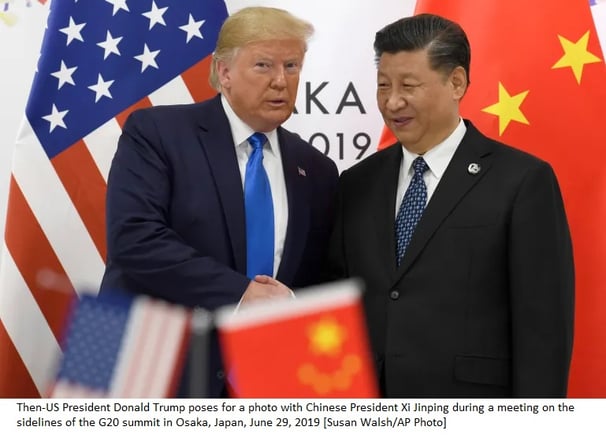Why Trump's Unpredictable Stance on China Concerns India
After a four-year border standoff, India and China reached a moment of détente in October. However, the question remains: will it hold up under Trump’s influence?
NEWS


Why Trump's Unpredictable Stance on China Concerns India
New Delhi, India — When China recently announced the creation of new counties in territories that India claims as part of Ladakh, India swiftly protested. The move raised tensions, with India's Ministry of External Affairs stating that it has never accepted China's "illegal occupation" of the disputed area, adding that Beijing’s actions wouldn't legitimize its territorial claims.
Trump’s unpredictable approach to China, noted by some analysts, worries India. As Jayant Prasad, a former Indian diplomat, put it, Trump has a tendency to “flatter his enemies and unsettle his friends.” This has been evident in his mixed signals towards China. Shortly after winning the U.S. presidential election, Trump suggested saving the Chinese-owned TikTok app, which he had previously sought to ban. He also extended an invitation to Chinese President Xi Jinping for his inauguration, though it remains unclear whether Xi will accept.
At the same time, Trump has not extended a similar invitation to Indian Prime Minister Narendra Modi, despite holding joint rallies with him in 2019 and 2020. This has sparked online mockery in India, with some suggesting that Modi’s foreign minister, S. Jaishankar, might have visited Washington to request an invitation for his boss.
For India, Trump’s unpredictable stance on China poses risks. Analysts warn that a tough anti-China approach from the U.S. could lead to difficult trade choices for India, while a potential deal between Trump and China could leave India out in the cold.
Christopher Clary of the Stimson Center explains that Trump’s administration might push India into a difficult position on trade, or worse, make a “grand bargain” with China, leaving India marginalized.
Trump's mixed signals also raise concerns in New Delhi about his potential focus on strengthening U.S.-China relations at India’s expense. Meanwhile, China’s state-run Global Times suggests a more cooperative U.S.-China relationship in areas like technology.
Despite the uncertainty surrounding Trump’s policy, India seeks to navigate these tensions. Modi plans to host the Quad summit, involving the U.S., India, Japan, and Australia, in 2025, and hopes for Trump’s attendance. At the same time, India faces China’s growing influence, with the Shanghai Cooperation Organisation summit in 2024 potentially bringing Modi to China.
Since the 2020 Galwan Valley clashes, which left 20 Indian soldiers dead, India has moved to restrict Chinese apps and investments. But as foreign investments slow, India is considering reopening its doors to Chinese investment in certain sectors.
Amitabh Mathur, former special secretary at India’s intelligence agency, believes the U.S. has been successful in countering China’s influence in the Indo-Pacific region, with strong India-U.S. ties being central to Washington’s strategy. However, experts predict Trump may continue the broader U.S. strategy of pushing back against Beijing, with figures like Elon Musk potentially tempering Trump’s approach.
As India seeks to balance relations with the U.S. and China, the uncertainty over Trump’s stance remains a challenge.
